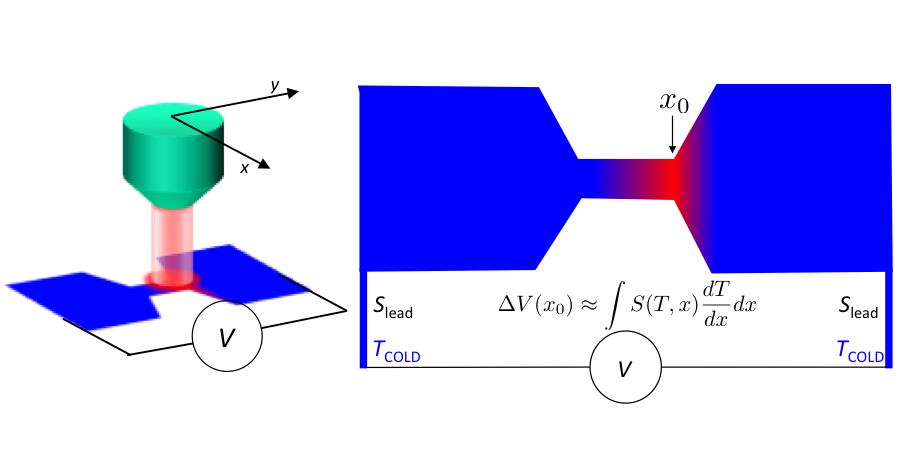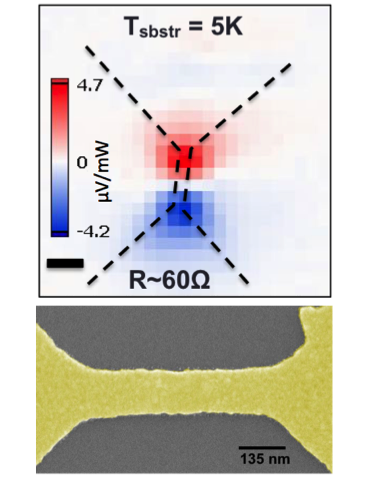Photothermoelectric effects
Let's take a bar of a conductor and force there to be a temperature gradient across it. The mobile charge carriers will tend to diffuse away from the hot end. Moreover, there will be a net flux of lattice vibrations (phonons) away from the hot end. Those phonons can also tend to scatter charge carriers - an effect called phonon drag. For an isolated bar, though, there can't be any net current, so a voltage gradient develops such that the drift current balances out the diffusion tendency. This is the Seebeck effect, and the Seebeck coefficient is the constant of proportionality between the temperature gradient and the voltage gradient. If you hook up two materials with different (known) Seebeck coefficients as shown, you make a thermocouple and can use the thermoelectric voltage generated as thermometer.

Ignoring the phonon drag bit, the Seebeck coefficient depends on particular material properties - the sign of the charge carriers and the energy dependence of their conductivity (which has wrapped up in it the band structure of the material and extrinsic factors like the mean free path for scattering off impurities and boundaries). Because of this dependence on extrinsic factors, it is possible to manipulate the Seebeck coefficient through nanoscale structuring or alteration of materials. Using boundary scattering as a tuning parameter for the mean free path is enough to let you make thermocouples just by controlling the geometry of a single metal.

Recently, we have been using the laser of our home-built scanning Raman microscope as a scannable heat source, to map out the photothermoelectric (PTE) response of nanostructures. We have found some interesting and unexpected results. The open-circuit photovoltage produced when nanoscale tunneling gaps can be as large as 10 mV, due to hot electron photocurrents. This result has been published in J. Phys. Chem. Lett. While the properties of metals are not well-suited to thermoelectric energy harvesting, we think that there are many exciting possibilities to explore in such systems.

